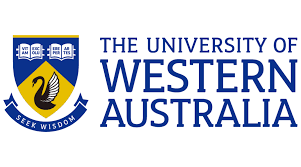University of Western Australia: Launch of Minderoo-UWA Deep-sea Research Centre reveals the world in deep east Indian Ocean
A world-leading research centre pushing the boundaries of frontier exploration and science in the deep sea will be officially launched in Perth today by Minderoo Foundation Chairman Dr Andrew Forrest AO and The University of Western Australia Vice-Chancellor Professor Amit Chakma.
The Minderoo-UWA Deep-Sea Research Centre has been established through a major five-year grant from Minderoo Foundation’s Flourishing Oceans initiative. Its mission is to explore the submerged earth fractures of the east Indian Ocean, six kilometres below the surface, known as the Hadal zone.
Never-before-seen footage released from the first expedition to the Wallaby Zenith Fracture Zone off the mid-west coast of WA in the eastern Indian Ocean, outside Australian waters, reveals some big surprises according to the Centre’s Founding Director, world-renowned biologist, engineer, adventurer, explorer and author Professor Alan Jamieson.
“It is fascinating, it’s like another world,” Professor Jamieson said. “On the very bottom it is soft white sand but there were a lot of animals, it is very diverse and then along the escarpment, which is a 600-mile-long wall, about 2000 metres high, there were things there I still don’t understand. It’s going to take a long time to unpack it in terms of what’s going on geologically.”
The Centre is the vision of Dr Forrest, whose own PhD research focused heavily on the biodiversity of the Indian Ocean’s Perth Canyon and its ecological importance. Dr Forrest said the deep sea held the key to unlocking many of the questions about life on earth in terms of biodiversity, ocean processes such as currents and circulation, and human impacts, including climate change.
“We need to consider the ocean as one big body of water,” Dr Forrest said. “We know a lot about the top 2000 metres and then as you get deeper, our understanding becomes less and less. It’s Minderoo Foundation’s aim to fill in the gaps for that deepest 50 per cent of the ocean so we can better understand how to treat the ocean as a whole and understand what it is telling us about the pressure we are putting on it.”
The Indian Ocean is the world’s third-largest ocean spanning 70,560,000 km2 and accounting for 19.5 per cent of the world’s ocean area. With an average depth of almost 4000m, it is the least understood of the world’s five named oceans and very little is known about marine fauna and species at its depths.
UWA Vice-Chancellor Professor Amit Chakma welcomed the investment in deep-sea research. “UWA is proud to support this important collaboration contributing to much-needed research in one of the most unexplored parts of the world,” Professor Chakma said.
“It aims to comprehensively explore the deepest areas of the Indian Ocean – mapping the ocean floor, and characterising and discovering new fauna and marine species.”

